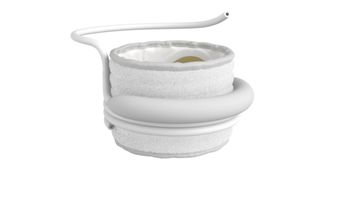
Overcoming interoperability complexity to achieve higher quality, safer care
Key Takeaways
- Interoperability enhances care efficiency by providing complete patient information, reducing delays and unnecessary tests, and improving patient satisfaction.
- Barriers to interoperability include complexity, data silos, and skepticism about its transformative potential, despite existing supportive policies and certified EHRs.
Learn how enhanced interoperability in EHR systems transforms patient care, reduces costs, and improves outcomes across health care settings.
For years, the promise of health care data
Perhaps nowhere was the dysfunction caused by a lack of interoperability more obvious than where I practice, in the emergency departments (EDs) of two hospitals, one in a suburban area and another in a rural community.
Before updating our systems to enable the smooth flow and delivery of actionable data from other providers, we made care decisions without access to the complete picture of a patient’s medical history. This typically slowed our care teams and delayed action, leading to longer waits, unnecessary tests and frustration for patients.
However, as the organizations that house my EDs learned, greater interoperability between providers outside the hospital’s four walls significantly improves my practice efficiency and experience, as well as the outcomes and satisfaction of our patients.
The Challenge on the Ground
Consider this scenario that I encountered during a recent shift. A patient with dementia from a skilled nursing facility had just fallen and arrived at our ED. Due to her condition and the fact that no one from her family or the SNF was available, we knew very little about her.
Historically, in my ED, and currently in many emergency departments across the U.S., I would have no reliable insight into her chronic conditions, recent hospitalizations at other facilities, allergies, or care goals.
The result? Increased cost of care, wasted services, longer wait times, and greater patient risk. Multiply this situation across a whole department, and the ripple effects on system efficiency and patient outcomes become profound.
Fortunately, because the hospital had implemented a collaborative-care data network connected to the patient’s nursing facility, I could view a two-page synopsis that provided me with medical problems, medications, care team information, family information, and code status. I could see that the patient was being treated for chronic low blood-sodium levels, which we confirmed with a quick and simple blood test. The patient returned to the facility and continued her rehabilitation rather than being admitted to our hospital for a presumed acute problem never acute in the first place.
Furthermore, with AI and machine-learning technologies, we can now apply risk scores to patients discharged to skilled nursing facilities. Such actionable metrics prioritize the highest-risk patients and help SNF clinicians intervene to help avoid readmission.
What’s holding interoperability back?
If the benefits are clear, why hasn’t widespread interoperability occurred yet? The short answer is complexity and a lack of awareness about opportunities. Most health care data is still siloed, especially across different care settings in the continuum. That appearance of complexity leads health system leaders to make incremental changes or not pursue interoperability at all because they believe it’s unachievable.
The Assistant Secretary for Technology Policy/Office of the National Coordinator for Health IT (ASTP/ONC) has made strides to encourage the widespread adoption of interoperable systems through the Trusted Exchange Framework and Common Agreement (TEFCA) and the 21st Century Cures Act, but major barriers remain.
However, a hugely important distinction is that interoperability is not just about exchanging raw data. Health care providers are already drowning in data. What they need is information that’s:
- Accessible
- Extractable
- Presented in a standardized, concise, and intuitive format
After nearly two decades with EHRs and continued data fragmentation, health care leaders are understandably skeptical of the value of interoperability and underestimate how transformative it is for their organizations, providers and patients.
Yet leading health care organizations have implemented
When providers and administrators witness how this access to real-time actionable data can be a reality, they immediately appreciate the significance of how it will improve clinical workflows, efficiency and patient outcomes.
Removing complexity
Switching to interoperability-enabled workflows will require culture change, policy alignment, and continued innovation. But the return is undeniable: better care coordination, improved outcomes, lower costs, and a much-improved health care experience for patients and providers alike.
According to the ASTP/ONC,
Given this progress, we cannot settle for fragmented systems. The tools to connect them already exist. The imperative now is to use those tools, scale them, and build a truly interoperable health care system that serves every patient, in every setting, without delay.
Hamad Husainy, DO, FACEP, is chief medical officer of
Newsletter
Stay informed and empowered with Medical Economics enewsletter, delivering expert insights, financial strategies, practice management tips and technology trends — tailored for today’s physicians.








